13+ Sample Institutional Development Plan
-

Institutional Development Plan Template
download now -
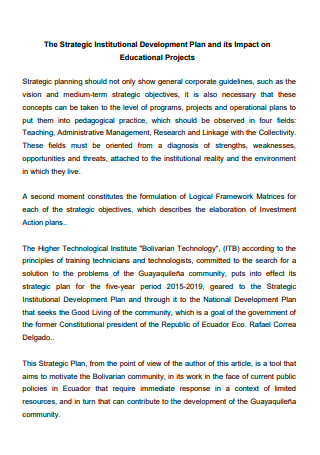
Strategic Institutional Development Plan
download now -

Basic Institutional Development Plan
download now -
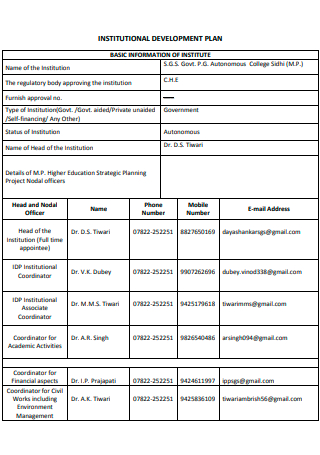
Institutional Development Plan Example
download now -
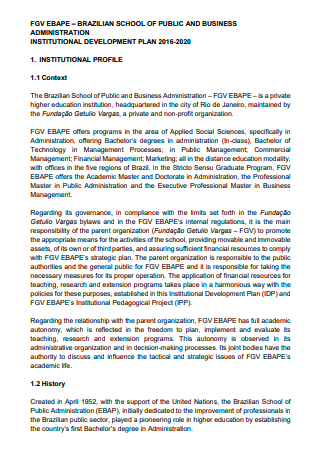
School of Public and Business Administration Institutional Development Plan
download now -
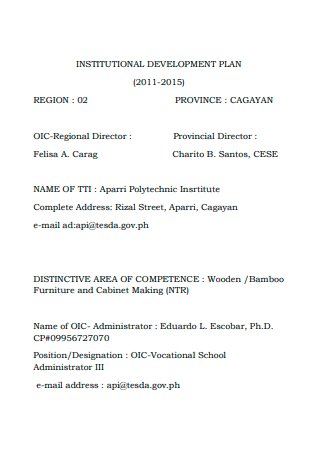
Institutional Development Plan Format
download now -
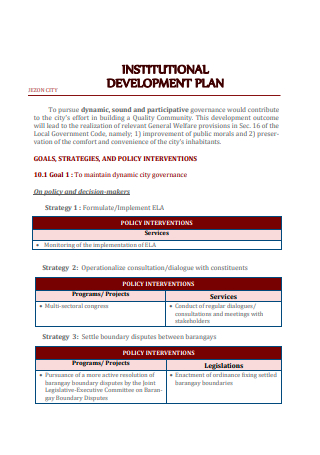
Printable Institutional Development Plan
download now -
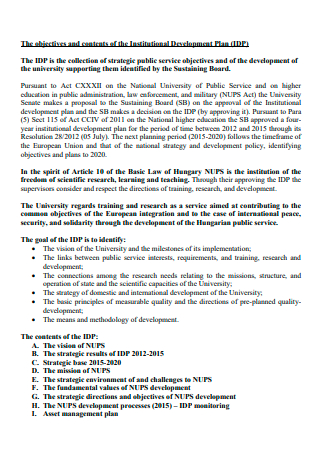
Institutional Development Plan in PDF
download now -
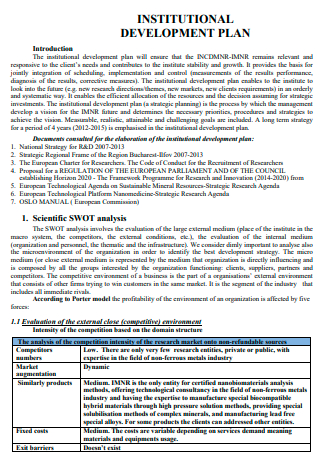
Standard Institutional Development Plan
download now -

Formal Institutional Development Plan
download now -

Simple Institutional Development Plan
download now -

Draft Institutional Development Plan
download now -

Sample Institutional Development Plan
download now -

College of Engineering Institutional Development Plan
download now
FREE Institutional Development Plan s to Download
13+ Sample Institutional Development Plan
What Is an Institutional Development Plan?
Types of Institutions
Tips for Creating an Institutional Development Plan
How to Create an Institutional Development Plan
FAQ
How do you create an institutional plan?
What activities does doing institutional development involve?
What are the parts of a development plan?
What are institution examples?
What are the 4 types of institutions?
What Is an Institutional Development Plan?
An institution development plan is a comprehensive plan that outlines and details the overall direction of an institution. The development plan contains various strategies and programs for a projected timeframe or a given period (e.g., 5 years).
According to Study.com, institutions share many similar characteristics including they have defined objectives, follow procedures, subscribe to customs, provide for man’s basic needs, and they are governed by rules that shape their citizens. In most societies, the five most common and universal social institutions are the family, economy, religion, education, and the state.
Types of Institutions
The word institution is a broad term and it can encompass several different types. There are a number of different types of institutions, the most common and universal are described below.
Tips for Creating an Institutional Development Plan
The content of your institutional development plan would largely depend on the type of institution. But there are basic tips that anyone can apply to create a more long-term and sustainable institutional development plan.
How to Create an Institutional Development Plan
Crafting an institutional development plan is neither simple nor easy. As discussed previously, development plans require collaborative effort and a multi-stakeholder approach. Fortunately, there are sample templates that can serve as a blueprint or guide for creating an institutional development plan. Simply choose one that best suits your needs and follow the step-by-step process below.
Step 1: Set the Objective
The first step is to establish your institutional objectives. The importance of setting the right objective cannot be stressed enough. What do you want to achieve as an institution? What is the end goal? It is helpful to set objectives within a specific timeframe to make it more viable and realistic. You can list your objectives in paragraph form or in bullet points, depending on the format you choose. As much as possible, keep it specific and realistic. Keep in mind the SMART goal criteria when deciding on your objectives. The objective or objectives you list down will ultimately set the tone of your institutional development plan.
Step 2: Conduct an Assessment and Analysis
After establishing the objective or objectives, the next step is to assess your institution’s available or current resources. As discussed in detail in the previous sections, assessment is a crucial step in crafting a comprehensive and accurate development plan. Whether you are an educational institution, medical institution, or a political institution, you need to be able to have a good grasp of the current state of your institution. This involves not only being aware of what resources are available to you, but also the ones that you lack. Sometimes, assessment may not be enough so you can go further by analyzing and questioning why the current state is as it is.
Step 3: Plot Out a Roadmap
The next step is to prepare a detailed roadmap. This section may look different for various institutions. For example, the format may not necessarily be a roadmap, it can be a timeline or even a Gantt chart. But its essence involves the creation of action plans and strategies that address the objectives in Step 1. After taking into account your resources and other needs, you can then plan out the necessary action items or next steps. The point of a roadmap is to plot out the direction of the institution. Lastly, it is important to use concrete and action-based language in this section.
Step 4: Offer Recommendations
The last step is reserved for recommendations. This section is directly tied to the assessment and analysis in Step 2. No institution is, by no means, perfect. There is always room for improvement. Whether it is the processes, the direction, or even the organizational structure, it is just as important to look at these factors rather than just merely coming up with action steps or a roadmap. Make sure that your recommendations are based on sound reason and are justifiable. They should be concrete and relevant to the institution’s current needs and goals.
FAQ
How do you create an institutional plan?
To create an institutional plan, you need to establish clear objectives, evaluate and assess the institution’s current state, then plot a feasible roadmap or an action plan to achieve the objectives.
What activities does doing institutional development involve?
Institutional development typically involves a lot of activities and methods such as strategic planning, consultation with stakeholders, research, and project coordination.
What are the parts of a development plan?
The basic parts of a development plan include goals, objectives, strategies, assessment or evaluation, and recommendations.
What are institution examples?
Some common examples of institutions are government agencies, religious organizations, educational institutions, civic organizations, private corporations, and medical institutions.
What are the 4 types of institutions?
In the field of sociology, the four primary social institutions are family, religion, education and government.
Creating an institutional development plan requires careful planning and preparation. But with the tips and instruction guide provided above, you can craft one much faster and with greater convenience too with the use of any of the available templates provided. Browse the selection of editable institutional development plans above, choose one that suits your needs, and customize one today!
